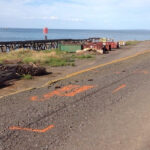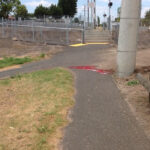In recent years, there’s been a sudden increase in burying the utility lines for phone, cable, electricity, etc. While underground utilities have definitely improved the aesthetic of the city and its protection from the storm but unfortunately it has also created numerous problems for utilities and people involved in doing excavation or underground work. Hitting or damaging underground utilities can result in millions of dollar loss, damages, loss of service and even fatal injuries and death.
With technology advancement and rapid development, cities are relying more on larger and more complex utility networks. To maintain the vital utilities, regular maintenance and repair are undertaken which leads to excavation to reach the underground utilizes. As we all aware, it is crucial to identify exact underground utility location before conducting any excavation and thus need to take several precautionary steps.
Practice Safe Work Procedure
Every year in Australia, several utility strikes occur which results in explosions and electrocution, exposing workers to the deadly risk and fatal injuries. Such damages aren’t only hazardous but expensive as well. A big chunk of money is allocated to identify and resolve the damage caused.
Plus, these casualties can hinder the necessary utilities service like water, gas and electricity – impacting the lives of people. These misjudged strikes can be avoided by strictly adhere to safe work practices and using the latest equipment and technology for underground utility locating.
Listed below are the five main precautions that can help ensure safety and the minimum possibility of striking utilities during excavation.
- PreparationIf one wants to avoid utility strikes, he needs to put a strong emphasis on better preparation in advance before commencing the work on site. It includes the best possible underground utility locating and mapping of the excavation area.Besides this, a desktop survey needs to be conducted by the cable locator or utility location services provider to collect and study existing records provided by the utility owners or operators. Here, one needs to understand that it is best to not rely on the records as the only information source. It is wise to always verify the records by carrying out a geophysical site survey.
- Site VerificationOnce all the records are gathered, opt for underground utility locating service for a complete physical site inspection. This will help assess the records of the underground utilities location and check if there are any conflicts or inconsistencies in the readings.
- Avoid Striking UtilitiesBefore you start digging any site, conduct a geophysical survey which will help detect, identify and verify the underground utilities location. Electro-Magnetic Locator (EML) is one of the most common utility locating techniques used in the industry. In this advanced cable locator technique, magnetic fields are used to trace the location of the underground utilities. This entire process is known as passive locating.Active location is another most important locating method. In this process, a transmitter is directly attached to the utility line which produces an EM field on the outer field that can be located using a cable locator. It is one of the most effective methods which can locate most of the buried utilities, minimizing the chances of strikes by 45%.
- Verify Underground Utilities LocationUndoubtedly, there is a possibility of underground utilities that may run through the excavation site. In such cases, trail holes can be dug to cautiously expose the underground utilities and mark its position. Most commonly, cable locators are issued to record and log the underground utility locating activity.In addition to this, one should have a GPR at hand which is one of the most efficient and easy to detect on-site utilities and checking the quality of data in real-time. This helps reduce the chances of utility damage.
- Train Your CrewLack of proper training will only result in the increased risk levels of striking underground utility excavation. One of the most common reasons of strike is the inadequate training received by the operators. Giving your crew proper pre-requisite training is essential to gain a thorough insight into what’s underneath.
Final Thoughts:
All in all, in one project or another, contact with utilities is unavoidable. We can only make sure that we are doing the right things and take the necessary precautionary steps to avoid strikes. It’s best to hire professional utility location services to ensure that there’s no scope of error, giving you peace of mind to conduct safe excavation without any mishaps.






